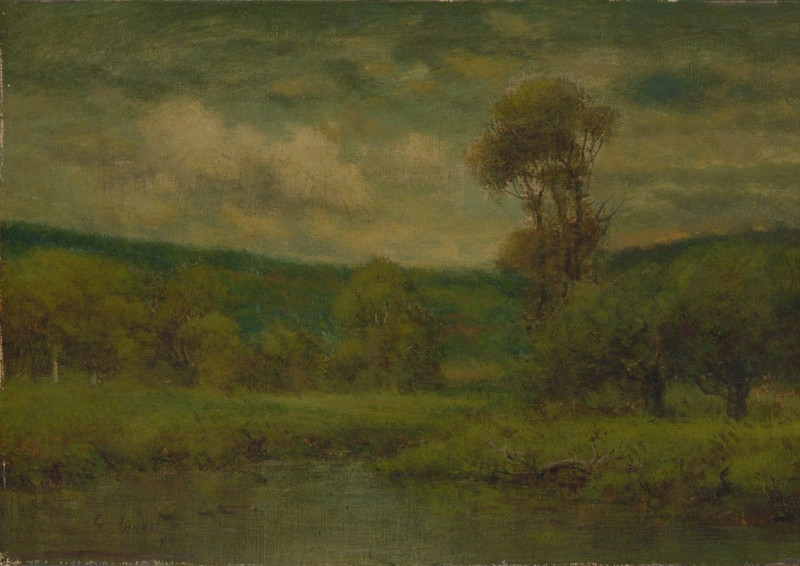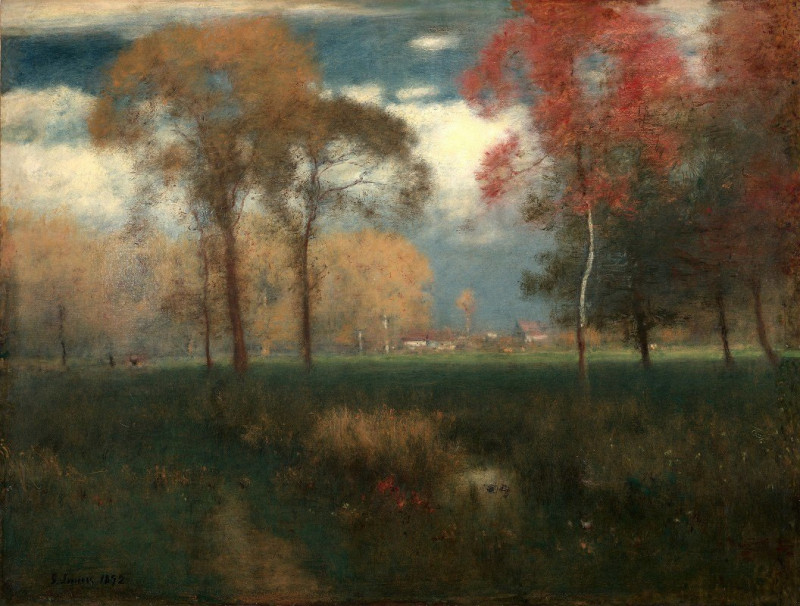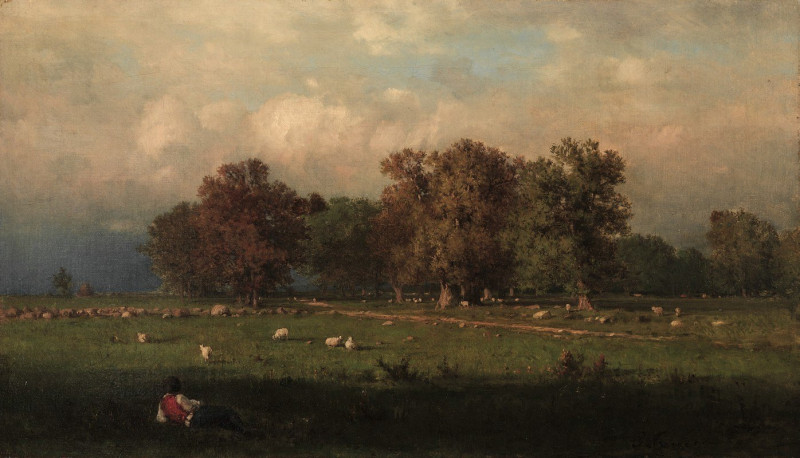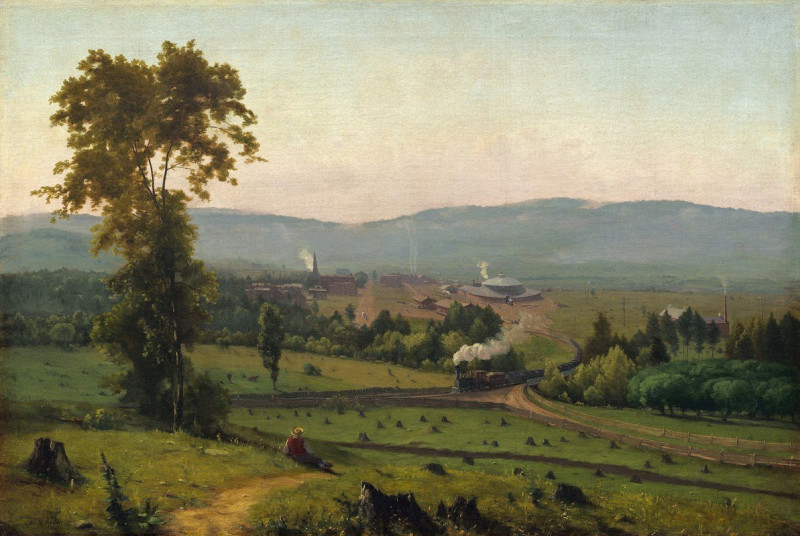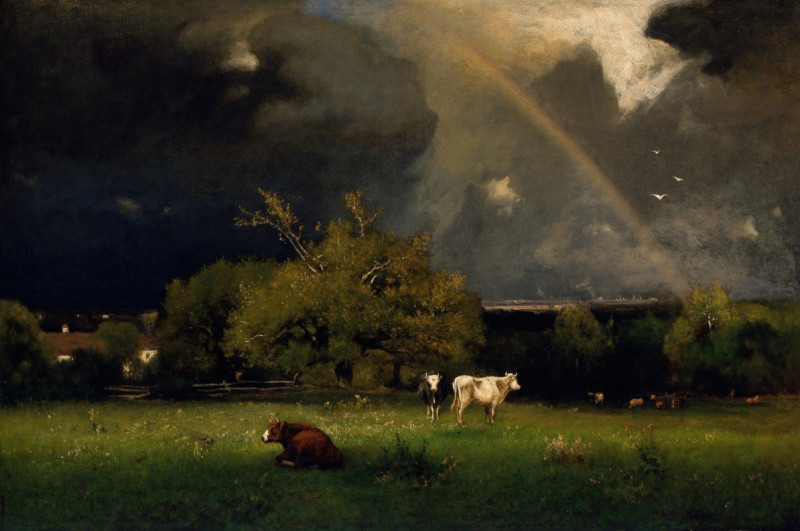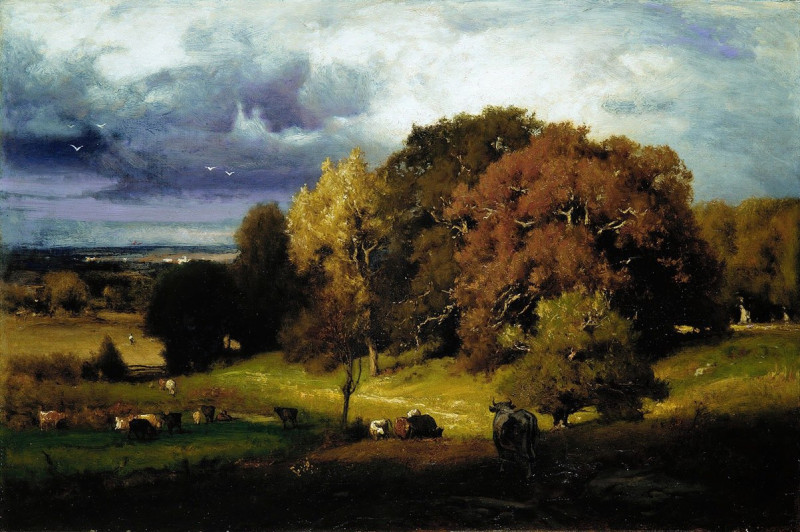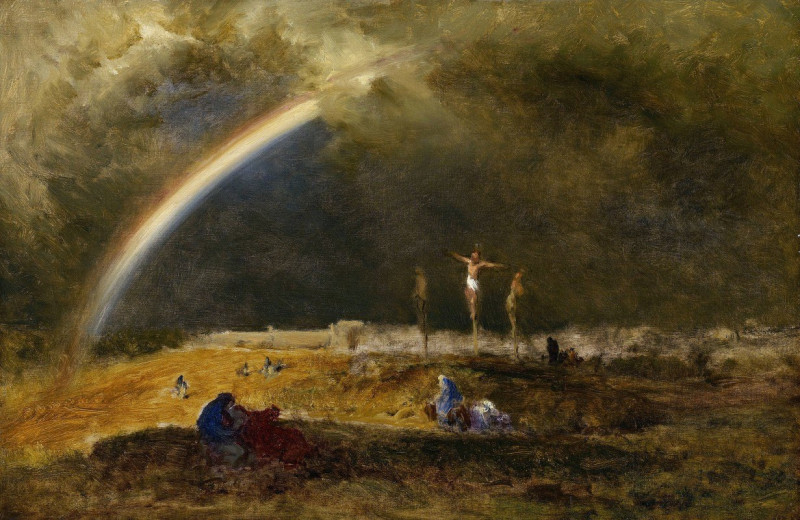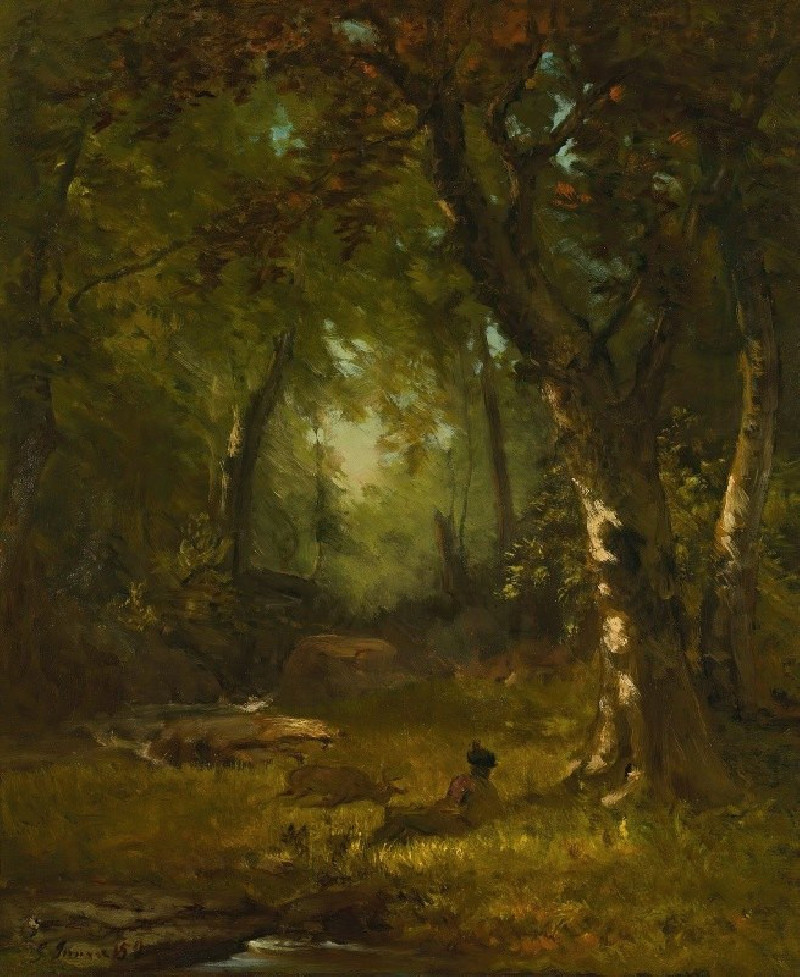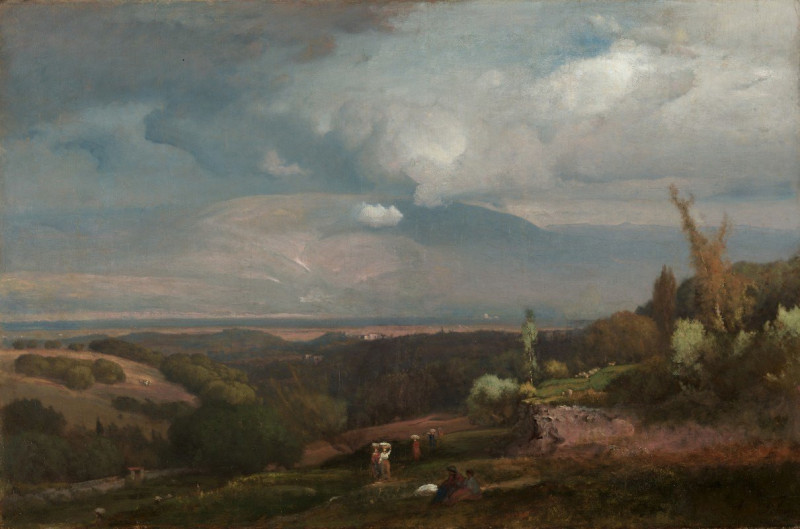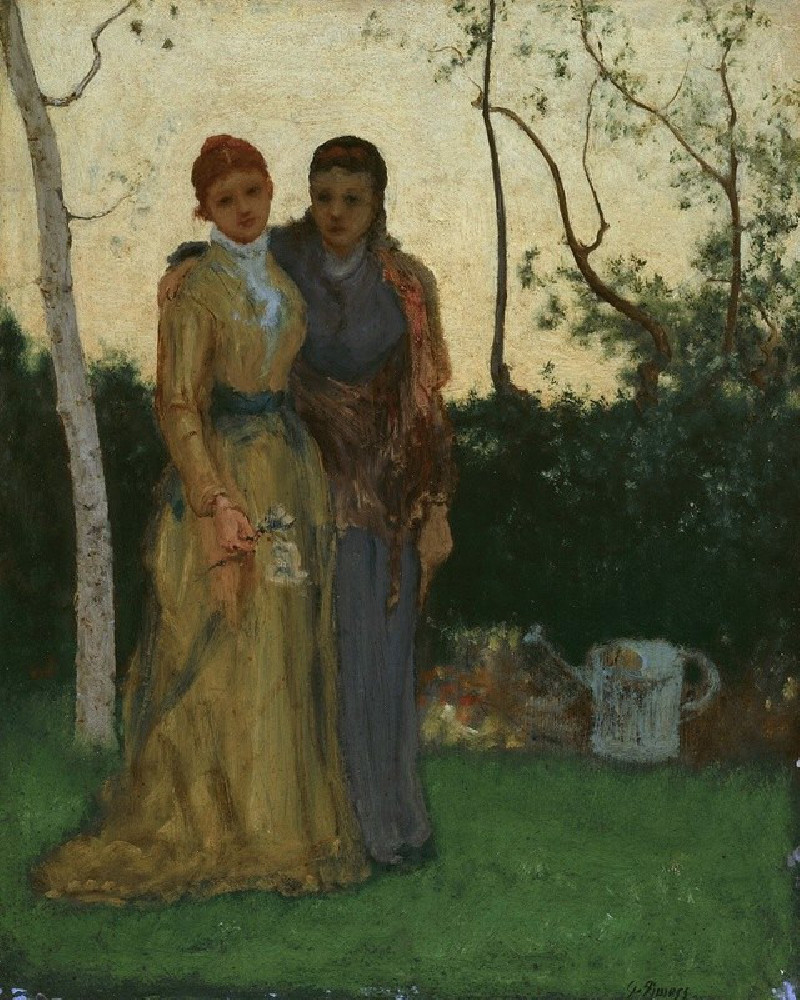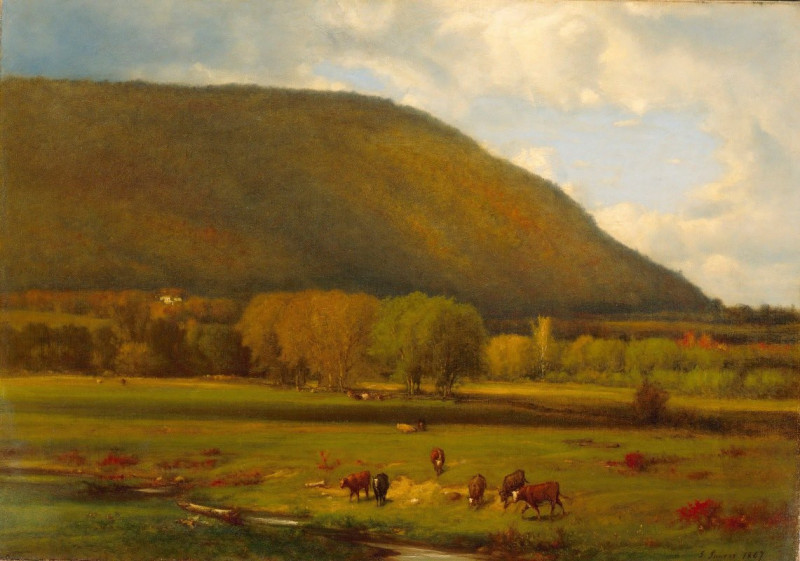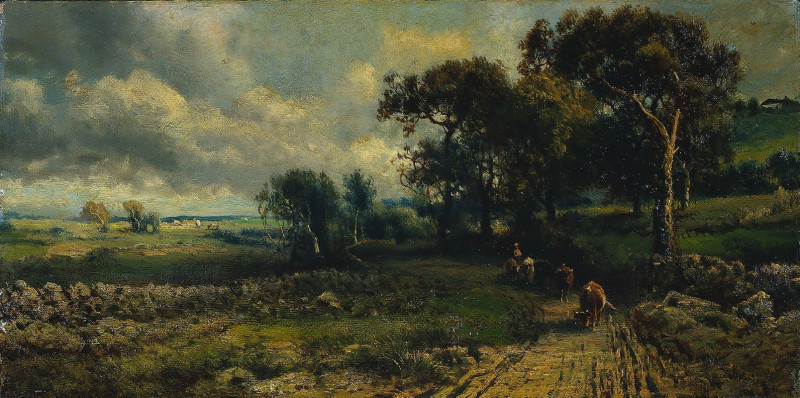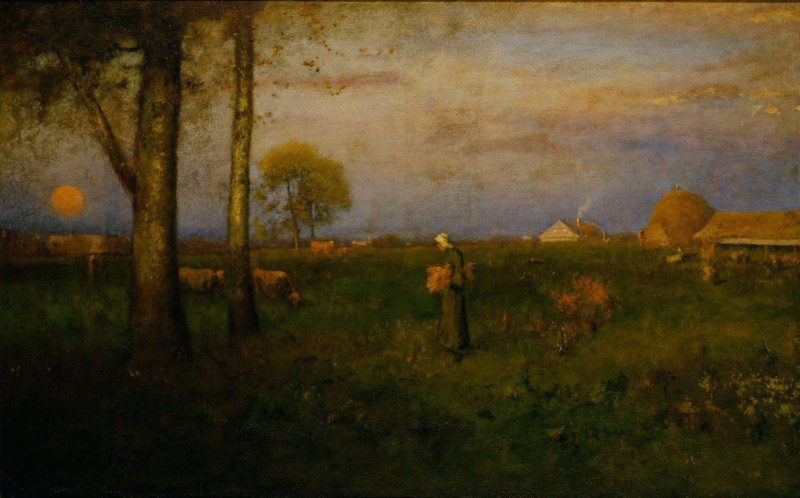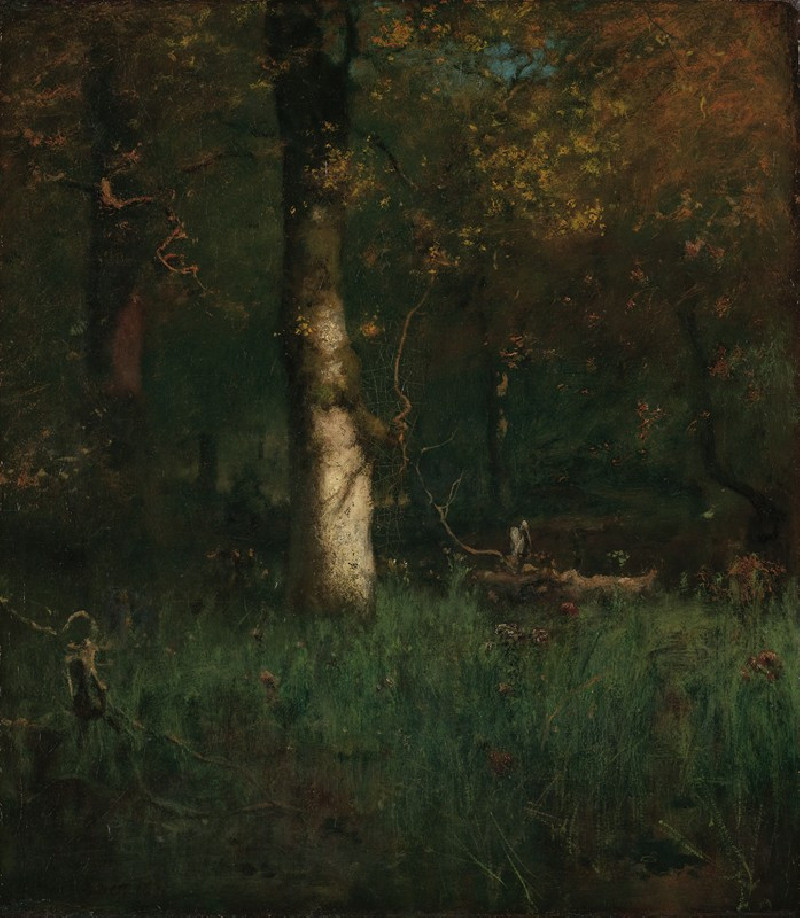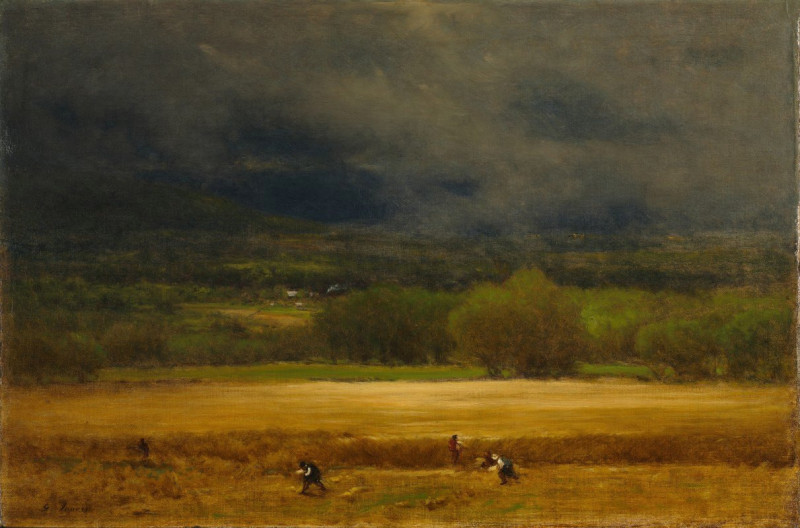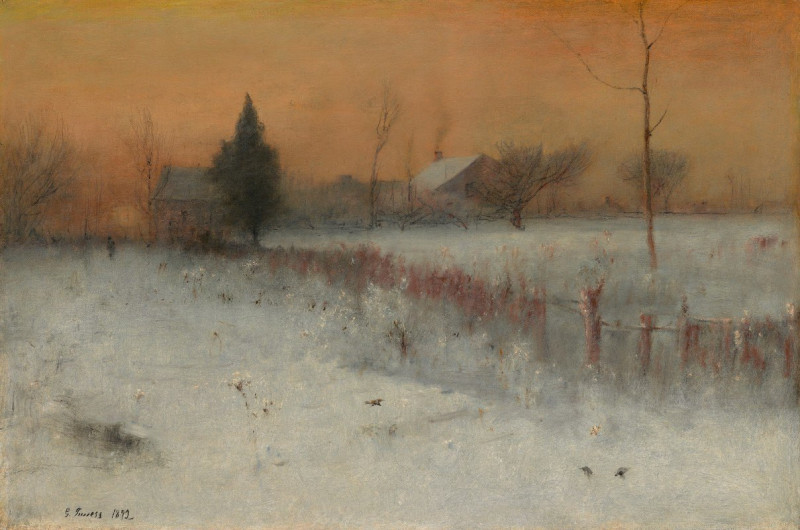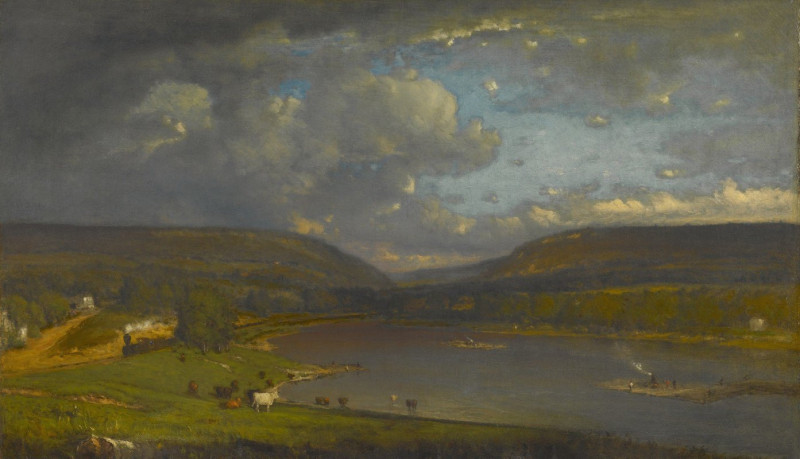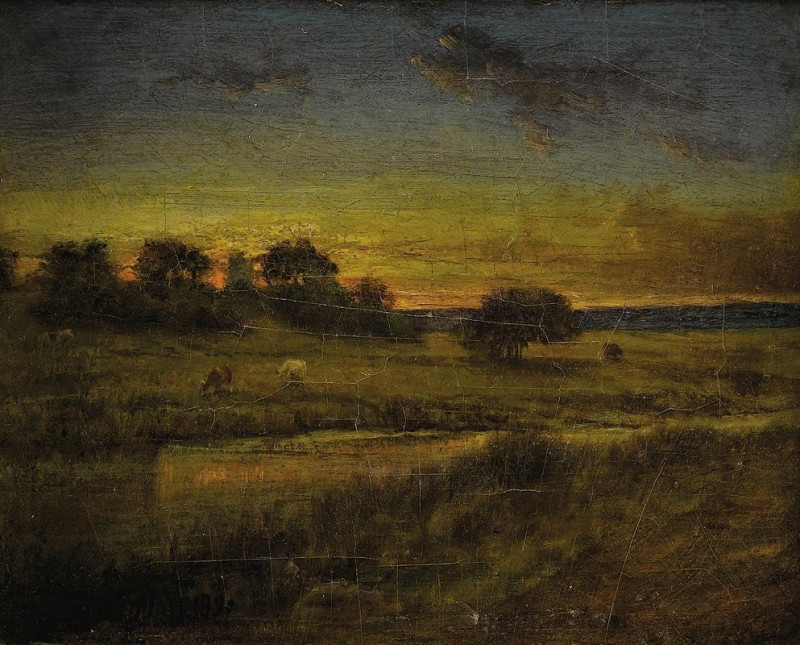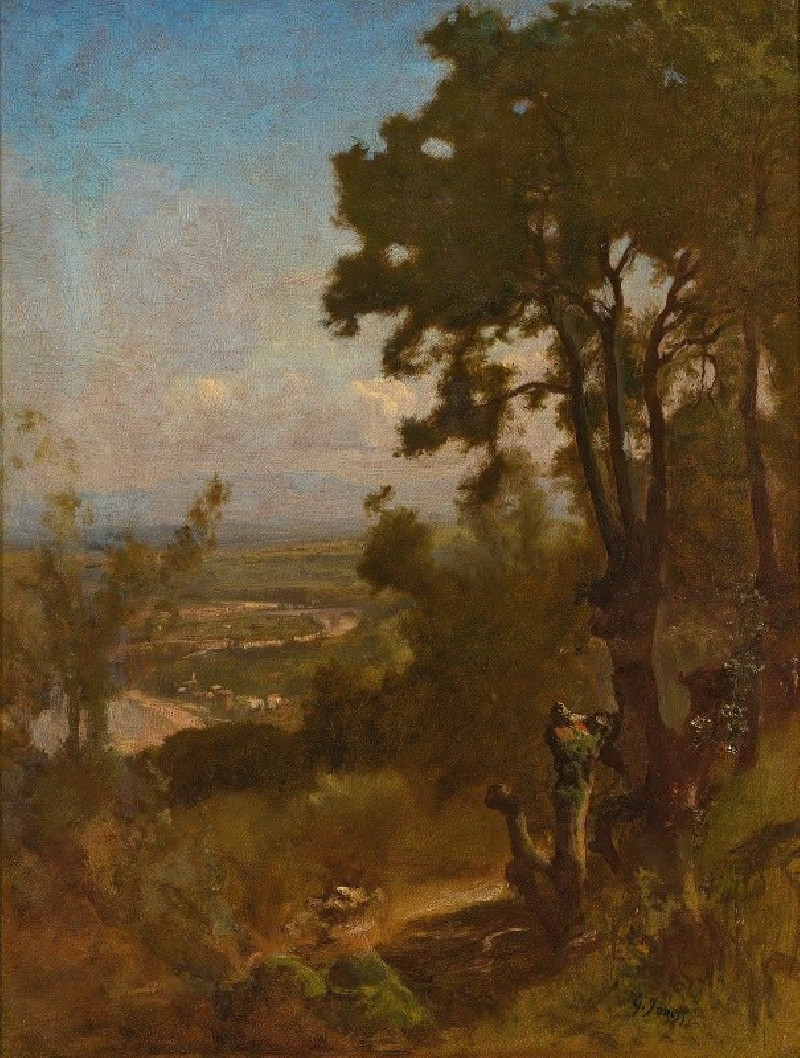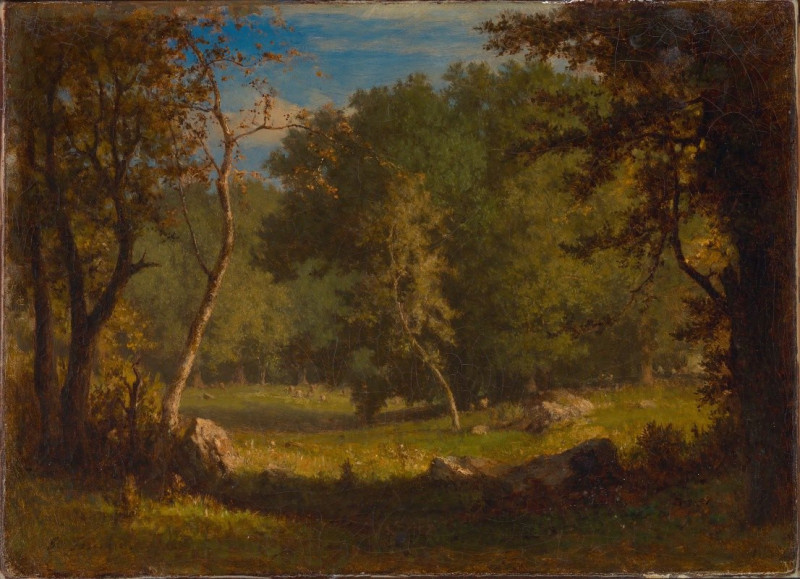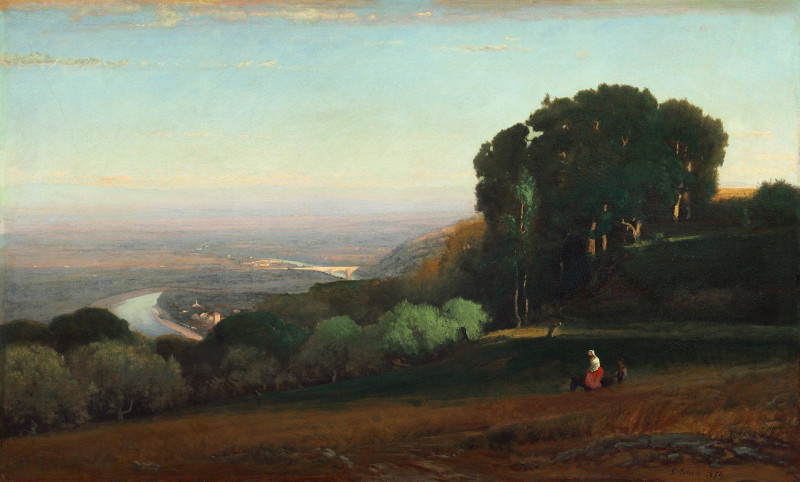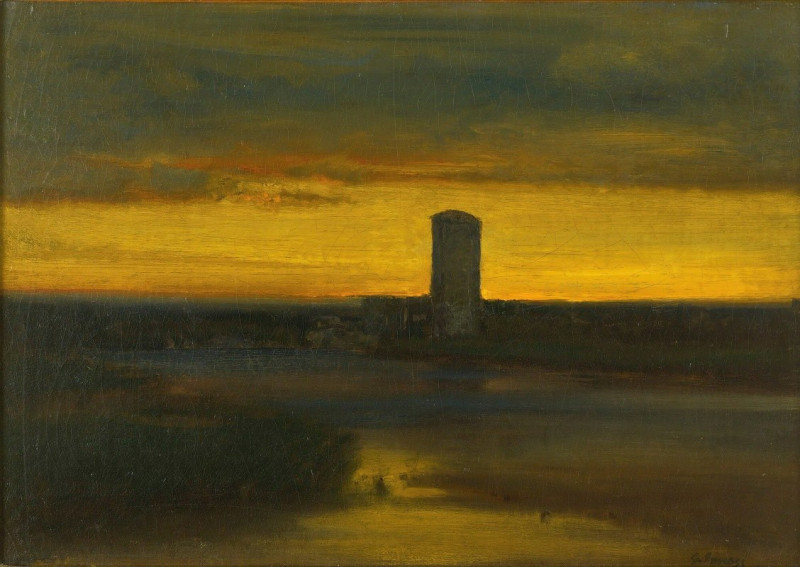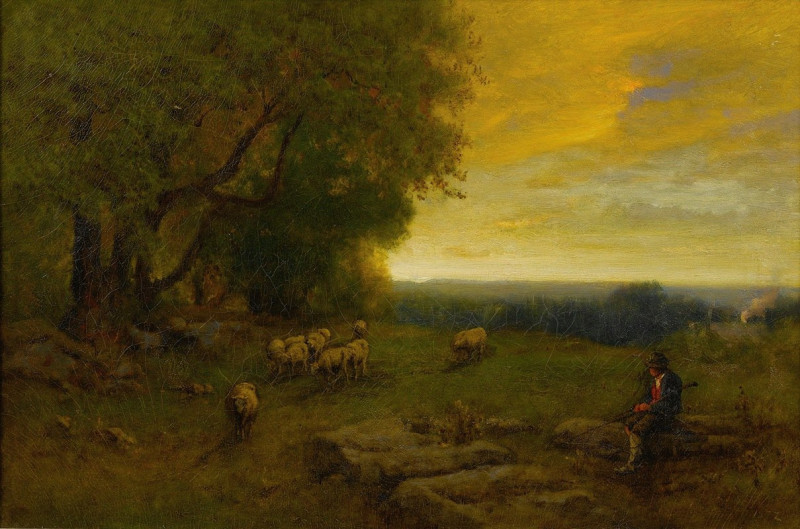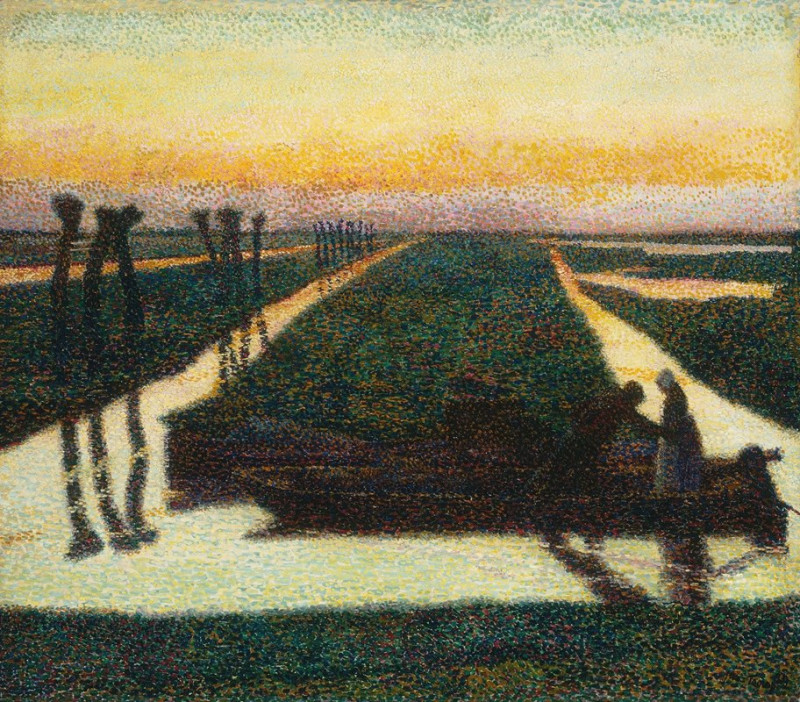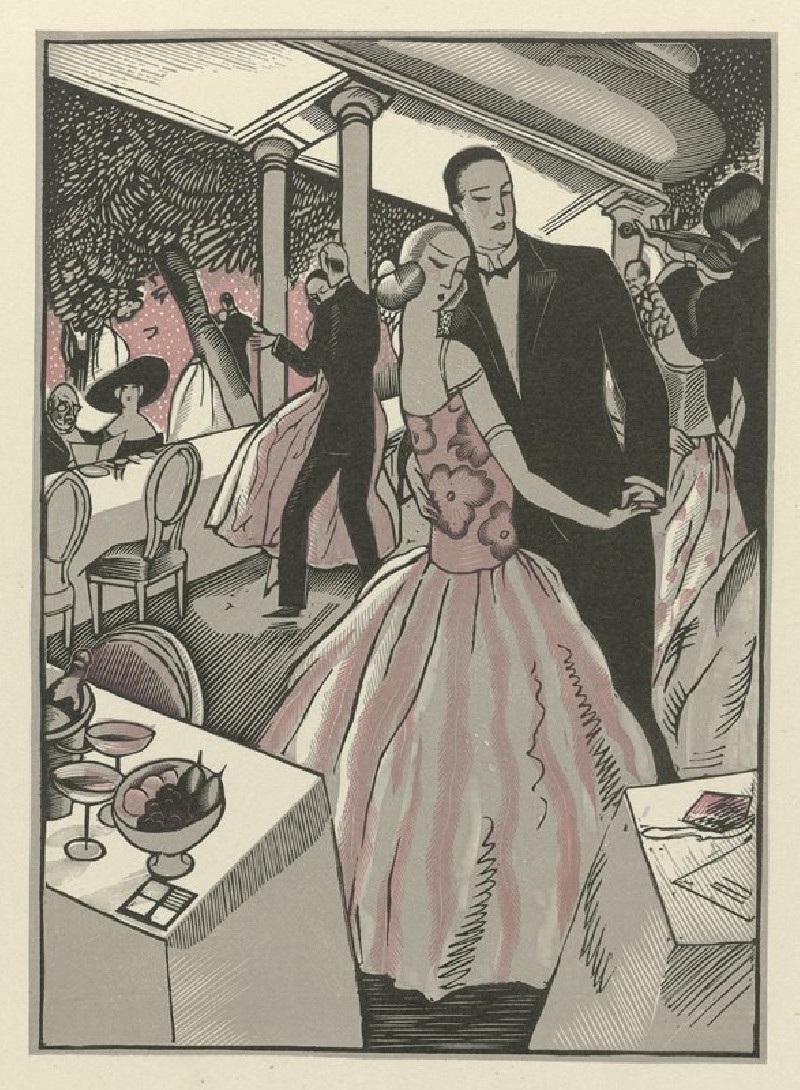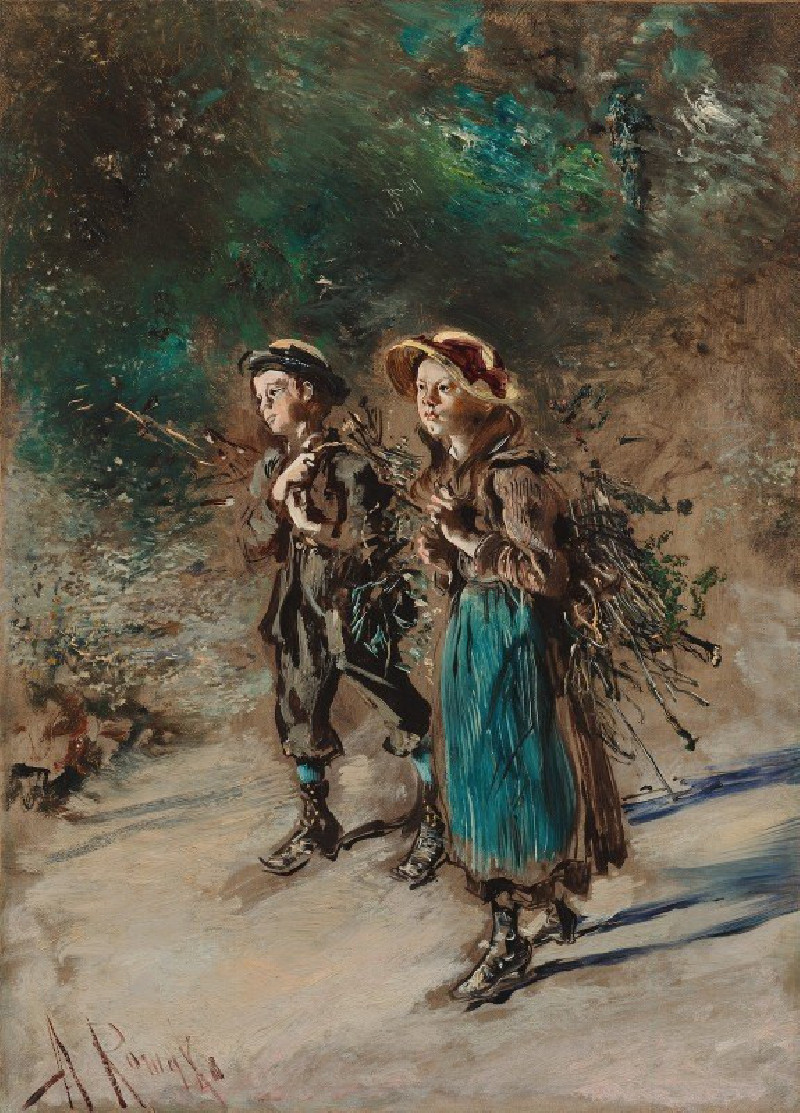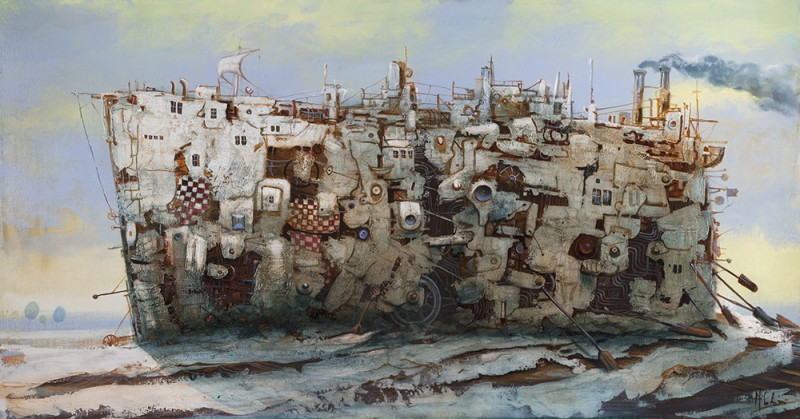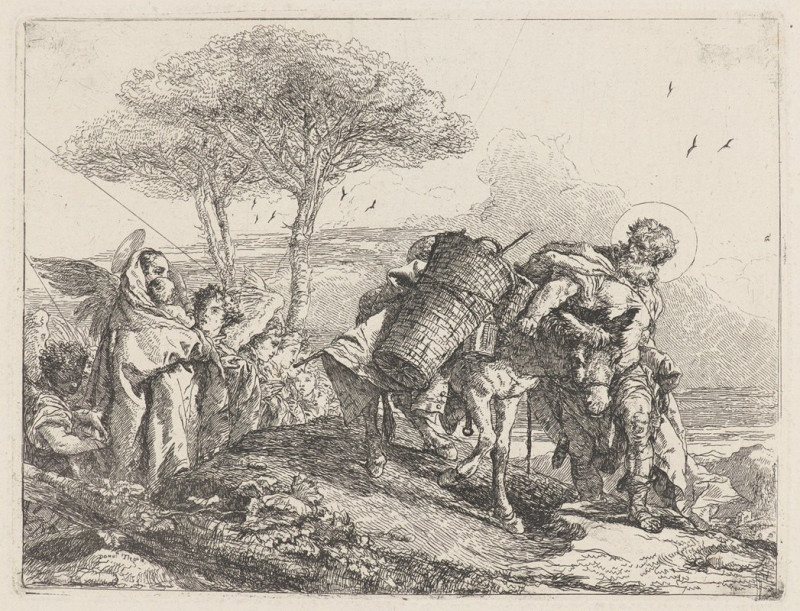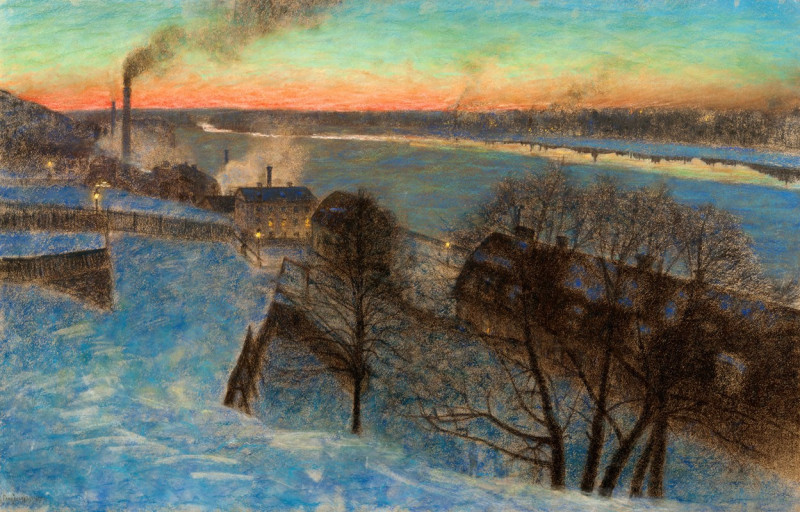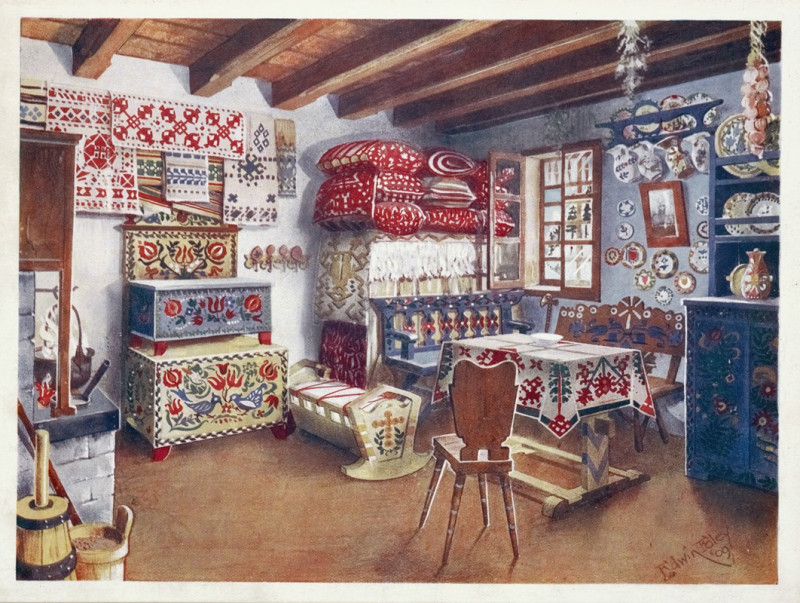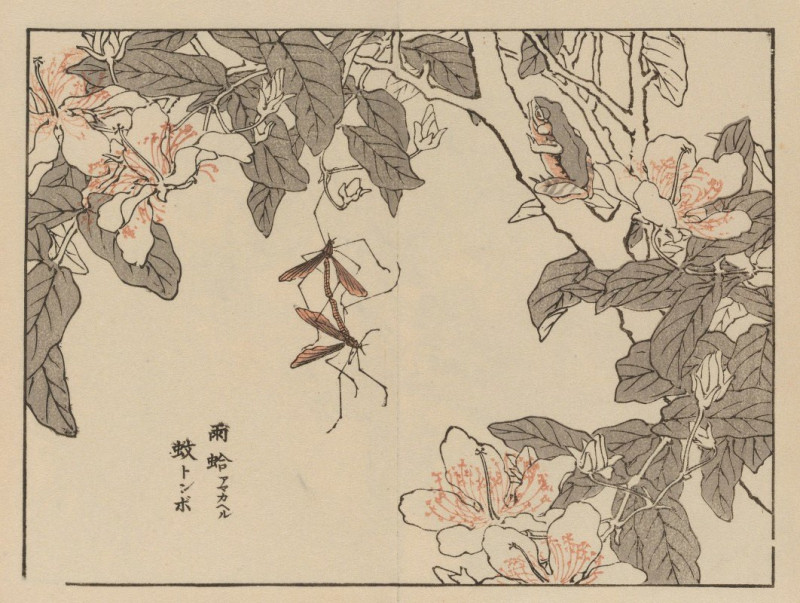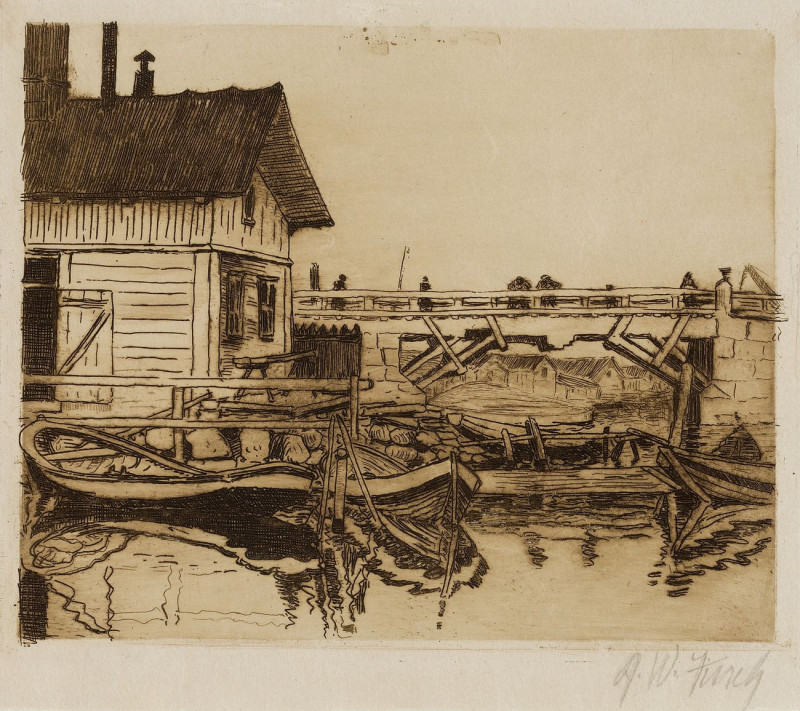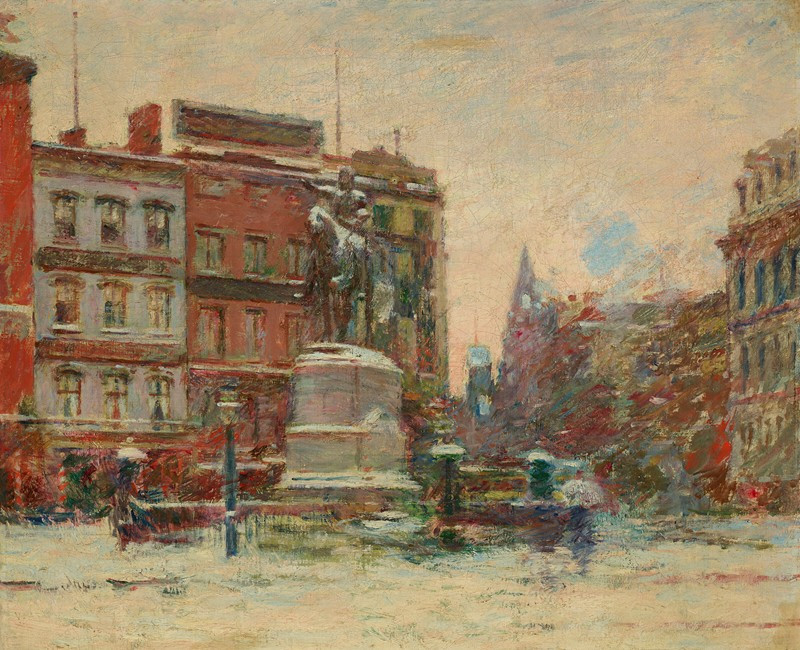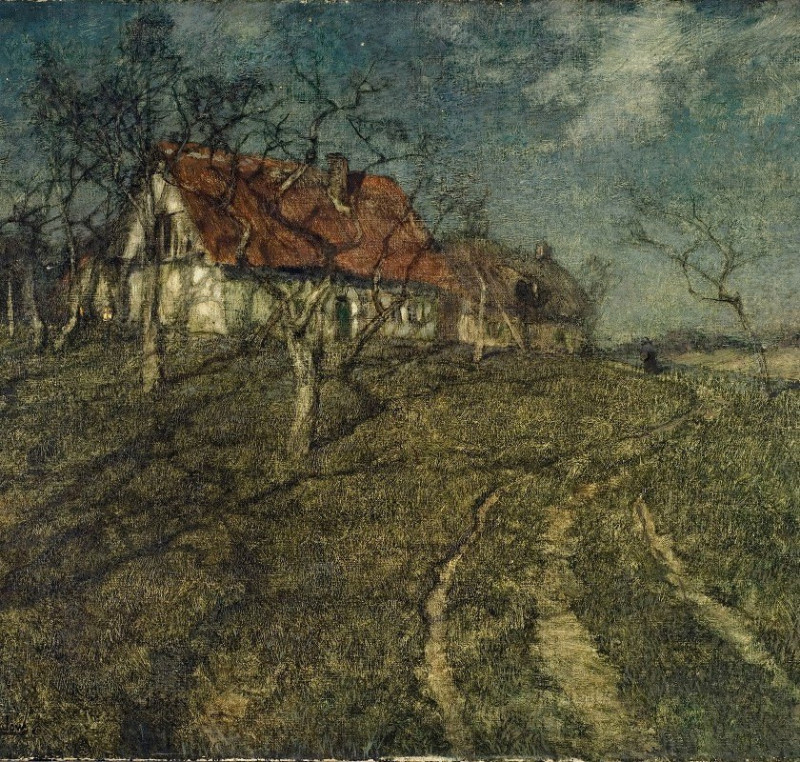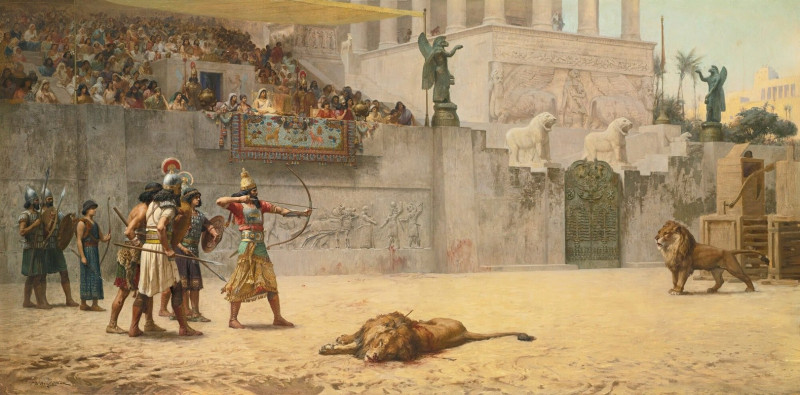Landscape (1884)
Technique: Giclée quality print
Recommended by our customers
More about this artwork
George Inness, a renowned American landscape painter, captured the subtle interplay of light and mood in the 1884 masterpiece "Landscape." This painting exemplifies his mature style, which seamlessly blends realism with the ethereal qualities of Tonalism. In this artwork, Inness invites viewers into a serene, almost mystical natural setting that emphasizes the transient beauty of the landscape.As we gaze upon this painting, we observe a lush meadow, predominantly in shades of green, under a vast, cloud-streaked sky that hints at the movements of air and light. The central focus of the composition is a solitary, towering tree standing resilient against the softer, billowing shapes of the distant trees and underbrush. This tree, with its intricate branches and leaves, acts as a stoic sentinel overseeing the field.The horizon is lined with densely wooded areas, whose dark tones provide a stark contrast to the clearing in the foreground. Subtle touches of blue and brown in the greens of the meadow suggest the diversity of the natural world and the presence of life within the tranquil landscape.Inness's brushwork, meticulous yet atmospheric, creates a sense of depth and texture, drawing viewers into a contemplative state. Through this painting, Inness not only showcases his skill in depicting nature but also his philosophical exploration of human perception of the natural world."Landscape" stands as a profound example of Inness's spiritual and aesthetic journey through art, demonstrating his belief that art should transcend mere visual duplication to express deeper, universal truths about existence.
Delivery
Returns
George Inness (May 1, 1825 – August 3, 1894) was a prominent American landscape painter.
Now recognized as one of the most influential American artists of the nineteenth century, Inness was influenced by the Hudson River School at the start of his career. He also studied the Old Masters, and artists of the Barbizon school during later trips to Europe. There he was introduced to the theology of Emanuel Swedenborg, which was significant for him; he expressed that spiritualism in the works of his maturity (1879–1894).

